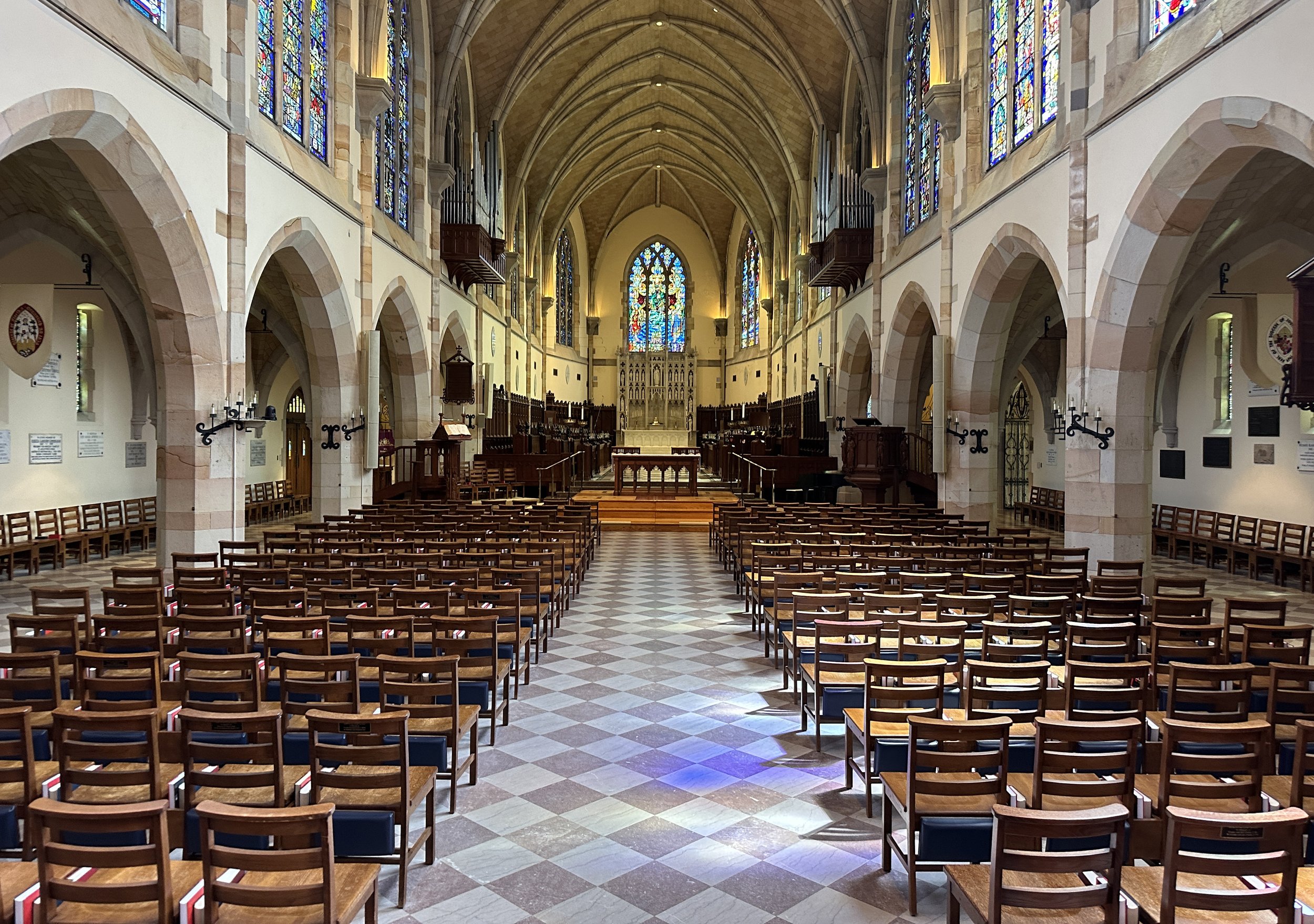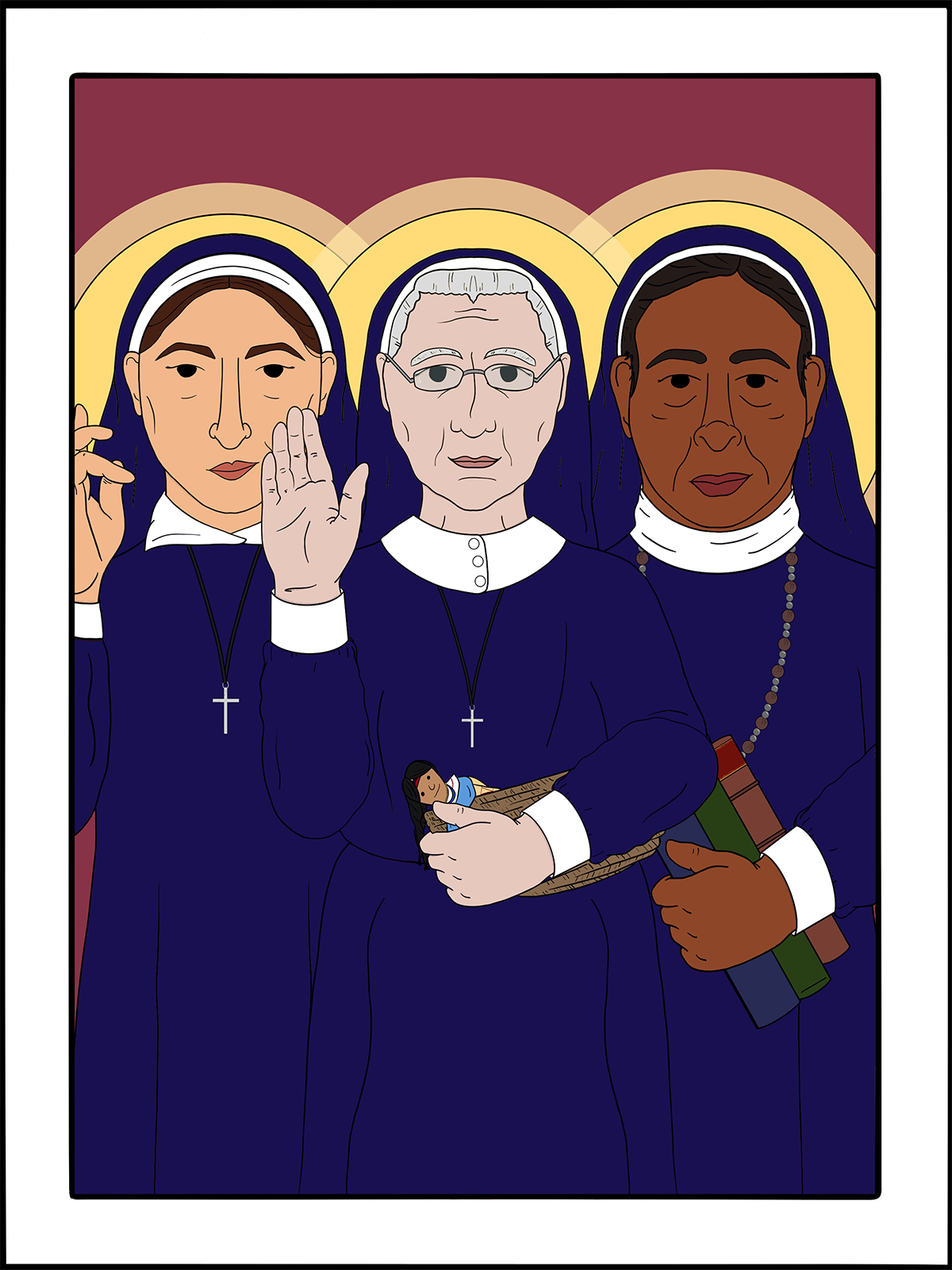
September 22
Episcopal Deaconesses
art by Rev. Kirsten Kohr of Geneva, Ohio O God of love, we bless you for calling and equipping the deaconesses of the Episcopal Church, who served your people at risk or in need, at home and throughout the world. With grateful hearts we honor their hard work, perseverance, and leadership in following Jesus into places of suffering or hardship, injustice or un-championed hope. May we, like them, bear the light of Christ to all people with humility and grace; through Jesus Christ our Lord, who lives and reigns with you, in the unity of the Holy Spirit, one God, now and for ever. Amen.
The Episcopal deaconess movement describes a ministry of women who were set apart for service by their bishops, beginning in 1857 and ending with the ordination of women as deacons, authorized by the General Convention in 1970.
Episcopal deaconesses joined a wider, multidenominational movement that began in Europe in the nineteenth century. Deaconesses ministered as nurses, teachers, chaplains, caregivers, administrators, fundraisers, and missionaries both within the United States and around the world. Episcopal deaconesses ministered both as individuals and as communities. They often served under difficult conditions, with little compensation, and always under gendered definitions. They ministered in times of peace and in times of war.
The Bishop of Maryland set apart the first six deaconesses in the Episcopal Church on September 21, 1857. Four of their names are known: Adeline Blanchard Tyler, Evaline Black, Carrie Guild, and Catherine Minard. Other bishops soon followed suit. Thirty-two years later, the General Convention recognized the ministry of deaconesses canonically thanks to the efforts of Mary Abbot Emery Twing and William Reed Huntington.
Notable deaconesses over the 113-year time span include Rebecca Hewitt, a caregiver, administrator, and leader of deaconesses in Alabama during the Civil War; Jessie Carryl Smith, a World War I nurse in France and later a missionary in Alaska; Jane Harris Hall, advocate for women in the New York theater industry in the early twentieth century; Susan Trevor Knapp, dean of the New York Training School for Deaconesses and a missionary in pre-World War II Japan; and staff members of the Appleton Church Home in Georgia, including Margaret Jennings and Sophjenlife Peterson, each a caregiver, formation leader, and head deaconess of the Appleton Church Home, and Mary Frances Gould, teacher, leader, and facilitator of mission work throughout the Diocese of Georgia; Harriet Bedell, a missionary in Oklahoma, Alaska, and Florida, who is commemorated on January 8; and Anna Alexander, who ministered in Georgia and is commemorated on September 24.
With the establishment of formation programs in several states and communities for their life and work, the number of deaconesses in the Episcopal Church grew, peaking in 1922 with 226 living deaconesses. When in 1970 women were admitted to ordination as deacons, the Church’s deaconesses were recognized as deacons, and women were counted among clergy for the first time.
As of March 2022, Priscilla Jean Wright is the last living woman deacon who was originally made a deaconess. She was set apart as a deaconess on June 18, 1964, in the Diocese of Los Angeles.
Some 500 Episcopal deaconesses blessed the Church and the world with their diverse ministries and provided an example of courageous faithfulness that challenged later generations to recognize God’s call to women.
Excerpted directly from “Lesser Feasts and Fasts 2022,” p. 426-427.

